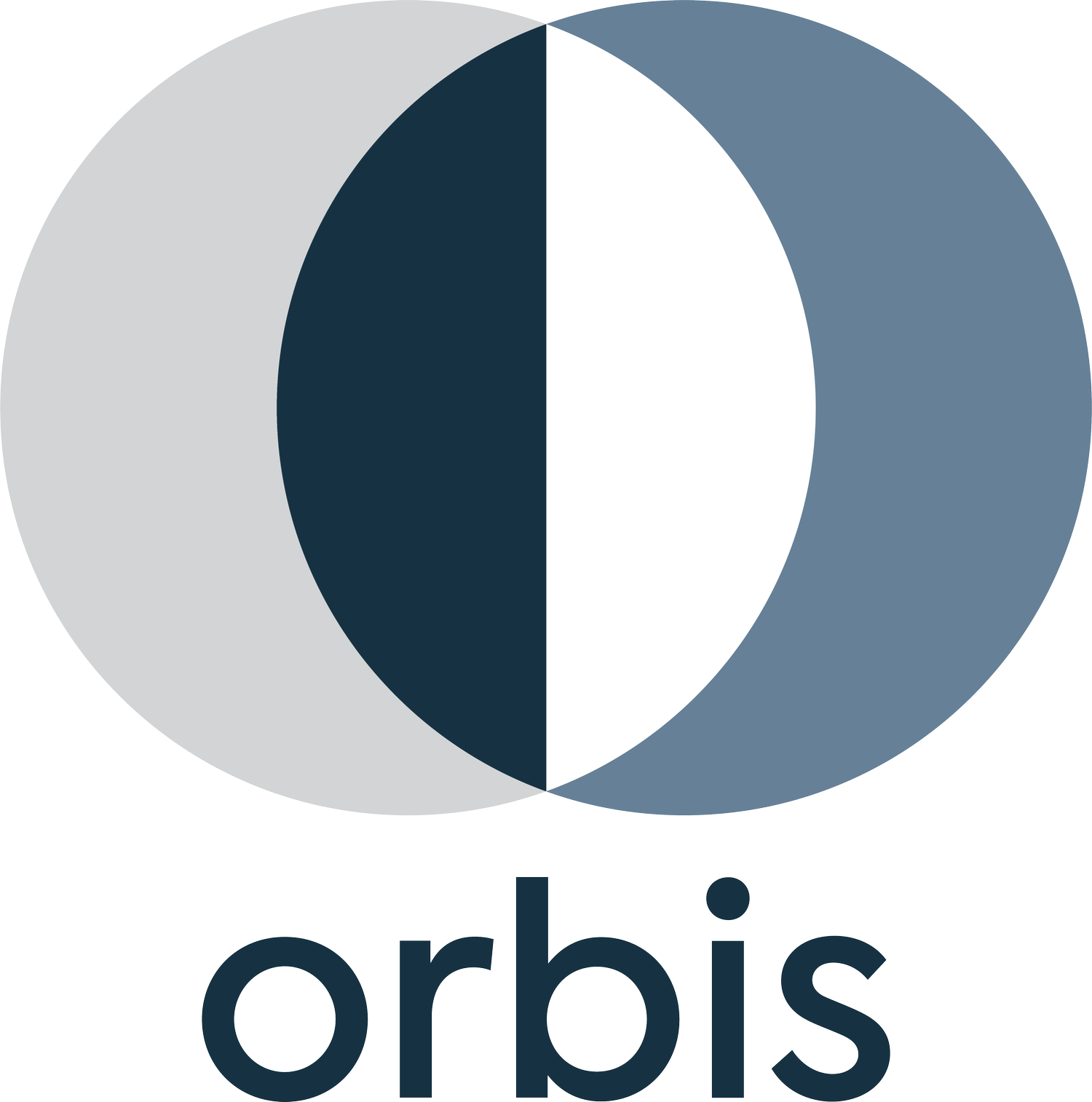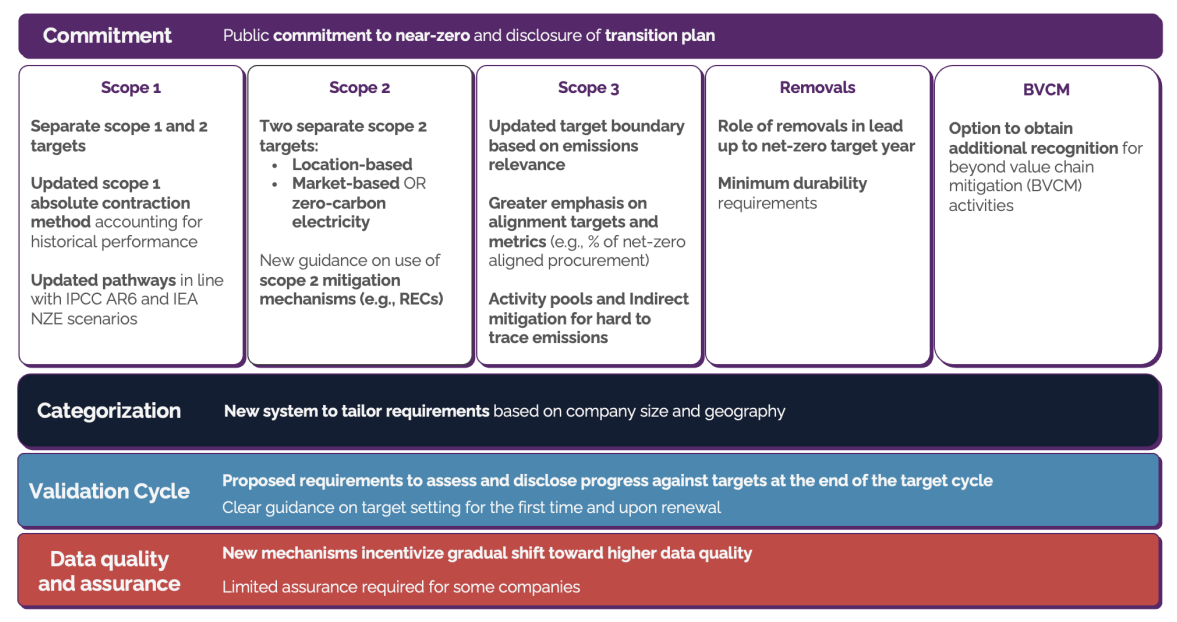Navigating the latest SBTi developments
The Science Based Targets initiative (SBTi) is a corporate climate action organisation that enables companies to set ambitious, science-based climate targets aligned with the latest climate science to limit global warming. The SBTi offers a clear framework for corporate climate action, defining and promoting best practice in emissions reductions and net-zero targets. As of March 2025, more than 7,000 companies worldwide have committed to science-based targets, including more than 1,500 companies pledging to achieve net-zero emissions.
As the urgency of climate action intensifies, with 2024 being the hottest year in recorded history, the SBTi has recently announced key updates to its processes and corporate standards, most notably the release of the consultation draft of the Corporate Net Zero Standard Version 2.0.
SBTi’s Corporate Net Zero Standard Version 2.0
On the 18th March 2025, the SBTi published a draft of its Corporate Net Zero Standard (CNZS) Version 2.0 for public consultation. The revision of the CNZS aims to ensure it continues to enable companies to set and deliver ambitious, science-based targets consistent with the global goal of achieving net-zero by 2050. Moreover, feedback from the public consultation (coupled with the second public consultation scheduled for later this year) will inform the final changes to the standard ahead of official publication. This move reflects the SBTi’s growing understanding of the challenges for businesses to demonstrate a credible path towards carbon reductions and net zero, and the importance of ensuring the Standard remains effective, practical, inclusive and fit for purpose. Key changes proposed in Version 2.0 compared to the current version of the Standard (Version 1.2) are highlighted below, with a high-level summary provided in the graphic.
Enhanced accountability and recognition:
With the first SBTi targets set in 2021, many companies are approaching the end of their target timeframe. Therefore, Version 2.0 introduces a new validation model that aims to enable and reinforce accountability, recognition and continuous improvement. This is done by requiring companies to assess and communicate progress at the end of their target cycle, and set new targets that account for previous performance, bridging any gaps to achieving net-zero. This proposal extends the SBTi’s focus from target-setting to include target implementation, ensuring demonstratable progress and continuous improvement.
Tailored requirements:
Version 2.0 introduces the distinction between Category A and Category B companies. Category A companies include large and medium-sized businesses operating in higher-income regions, which must comply with all criteria. In contrast, Category B companies, consisting of small and medium-sized businesses in lower-income regions, are granted greater flexibility, with some criteria being optional. These tailored requirements aim to encourage climate action by all, while acknowledging differences in size, resources, and operational context.
Changes to Scope 1, 2 and 3 targets:
Version 2.0 requires that companies set separate Scope 1, 2 and 3 targets, with the emission reduction benchmark updated to reflect the latest IPCC AR6 pathways (currently AR5). Moreover, net-zero targets across all scopes must now be aligned with pathways limiting global warming to 1.5°C with no or limited overshoot.
More specifically, Scope 1 target-setting is updated to reflect best practice and credible net-zero claims. Version 2.0 proposes two variations of a modified Absolute Contraction Approach: one adjusts future targets to correct emissions overshoot, and the other ensures emissions reductions at a rate consistent with achieving net-zero by 2050, regardless of prior overshoot.
Scope 2 emissions must have both a location-based target, and either a market-based or zero-carbon electricity target.
Scope 3 target-setting (for near-term and long-term targets) is now a requirement for Category A companies but remains optional for Category B companies. Version 2.0 also recognises the challenges associated with value chain emissions data and therefore places greater focus on the companies’ most emission-intensive activities and areas of greatest influence. As such, target-setting is concerned with alignment between metrics and methods as opposed to emissions-based targets.
Beyond value chain mitigation:
Version 2.0 provides stronger incentives for companies to take responsibility for climate mitigation beyond their value chain by recognising those that address the impact of ongoing emissions and support mitigation outside their value chains. This incentive recognises the critical role and urgency to scale up climate finance to effectively manage the climate crisis.
Addressing residual emissions:
Version 2.0 proposes three different approaches to addressing residual emissions. Either companies would be required to set carbon dioxide removal targets, receive optional recognition for setting such targets, or have flexibility to address residual emissions (either through emission reductions, carbon removal, or both).
The final publication of the Corporate Net Zero Standard Version 2.0 is expected in mid-2026.
To participate in the public consultation, you may submit your feedback via an online survey until 1 June 2025.
What does this mean for your company?
Throughout 2025 and 2026, companies will continue to be able to set near-term targets for 2030 using the current versions of the Corporate Net-Zero Standard Version 1.2 and Near-Term Criteria Version 5.2. These targets will remain valid for five years or until the end of 2030, whichever comes first. From 2027 onwards, companies will be required to use Version 2.0 to establish both new near-term and long-term targets.
Existing near-term targets are expected to remain valid until 2030 or until the conclusion of the target's timeframe, whichever is earlier. The SBTi will provide further details on the renewal process for companies with previously validated near-term targets during the second public consultation, scheduled for later this year.
Additional updates from the SBTi
In addition to the Corporate Net-Zero Standard Version 2.0, the SBTi has made further improvements to its processes and operations. The SBTi recently launched its SBTi Services website, containing information and resources to help your company set targets. This site also hosts the SBTi Validation Portal, designed to improve the efficiency and user friendliness of submitting your targets for validation to the SBTi. Overall, this aims to streamline the validation process and meet growing demand, furthered by the SBTi’s commitment to shortening validation times, allowing companies to act faster on their climate strategies.
Furthermore, the SBTi continues to improve on its sector-specific considerations and guidelines. These guidelines recognise the different challenges of each sector, and ensure targets are realistic, meaningful and actionable for every company and industry.
Why your company should set a SBTi target
The Sixth IPCC Assessment Report concluded that there is now a 66% chance that global warming will exceed 1.5°C by the end of the century, increasing the urgency of climate action and the importance of companies to take responsibility for their carbon emissions contributions. Not only is corporate climate action good for the planet, but it is also a hugely beneficial business strategy. By setting SBTi-aligned carbon reduction targets, it future-proofs your business against increasingly stringent climate-focused regulations, appeals to the increasingly climate-conscious investor and consumer, and yields operational savings across your business. Setting a SBTi-validated target has the added benefit of resulting in a clear, actionable, and measurable strategy for reducing your carbon footprint and achieving your net-zero goal.
If your company wishes to join the more than 7,000 companies with SBTi-validated targets, Orbis Advisory provides the services you may need. From calculating your baseline carbon footprint, to identifying key decarbonisation strategies tailored to your business, and supporting with your target validation procedure, Orbis Advisory can support with validating your corporate climate ambitions. For more information, please visit Orbis Advisory, or contact us directly to discover how we can best support your journey towards becoming a more climate-friendly and resilient business.



